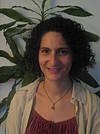The Project
Mathematical study of some equations related to physics, mechanics and optimal control
Winner

Dr. Sylvia Serfaty
Laboratoire Jacques-Louis-Lions
CNRS UMR 7598
Université Pierre et Marie Curie - Paris 6
75252 Paris Cedex 05
France
http://www.math.nyu.edu/faculty/serfaty
Thirty-one year old French citizen, Sylvia Serfaty is currently an Associate Professor of mathematics at the Courant Institute, New York University. She is a member of the editorial board of Communications in Contemporary Mathematics and the SIAM Journal on Mathematical Analysis. Having won awards such as the NSF Career award, the European Mathematical Society prize, and an Alfred P. Sloan Foundation fellowship, Dr. Serfaty has shared her expertise at seminars and conferences across the world. She gained her PhD in mathematics at the University of Paris-11 in 1999.
Project Description
Serfaty and her collaborators propose to study, via rigorous mathematics, some Partial Differential Equations (PDEs) and variational problems originating directly from models in physics and material science, fracture mechanics, image segmentation and optimal control.
By using and developing sophisticated mathematical tools in the field of nonlinear analysis and calculus of variations, they study the partial differential equations and associated variational problems, which allows for the characterization of stable, ground states, stationary states and dynamics of the physical system or problem.
A large part of her research has been devoted to the study of the Nobel-Prize winning Ginzburg-Landau model of superconductivity. Her analysis is aimed in large part at explaining mathematically the structure of the vortices that appear in a certain regime, and the Abrikosov lattices that they form, predicted by the physicist Abrikosov .In general the problems she studies share the apparition of "singularities" or "patterns" (vortices in superconductivity, fractures in mechanics, walls in micromagnetics) which can be described and understood by studying the equations in a certain asymptotic regime, yielding quantitative and qualitative results, which can in turn be compared with experiments or predictions, or serve for computations.

